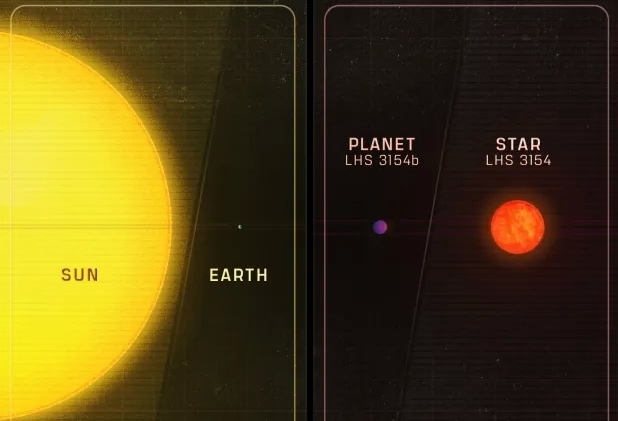



This 'forbidden' exoplanet is way too massive for its star

Baku, December 2, AZERTAC
Astronomers have discovered a massive extrasolar planet, or "exoplanet," orbiting an ultracool dwarf star that is way too small to host such a world, challenging scientists' models of how planets and planetary systems are born, according to Space.com.
The planet in question, designated LHS 3154 b, is 13 times as massive as Earth, meaning that it has a mass similar to the solar system ice giant Neptune, yet it closely orbits a tiny dwarf star, which is nine times less massive than the sun.
This means the ratio between the Neptune-like world and its parent star — LHS 3154, which is located around 51 light-years away — is 100 times greater than the mass ratio between Earth and the sun, something researchers didn’t think was possible. This is the first time a planet with such a great mass has been found around one of the universe’s more diminutive stars.
"This discovery really drives home the point of just how little we know about the universe," research co-author and Penn State University Verne M. Willaman Professor of Astronomy and Astrophysics, Suvrath Mahadevan, said in a statement. "We wouldn’t expect a planet this heavy around such a low-mass star to exist." Stars are formed when vast clouds of gas and dust accumulate overly dense patches that grow until they ultimately collapse under their own gravity. This leaves an infant star surrounded by a disk of leftover material called a "protoplanetary disk."
As that name implies, it is from this leftover disk of material that scientists believe planets eventually emerge. The amount of material left over from the formation of the star sets a limit on how big these potential planets can be.
The team determined that LHS 3154 b has such a heavy planetary core that the planet-forming disk from which it came from would've had to hold a great deal of solid material. In short, it'd have to have more material than current models would predict possible, research coauthor and astronomy graduate student at Penn State Megan Delamer explained.
Thus, the discovery of this particular exoplanet also raises questions about the formation of stars. This is because the ratios of the dust-to-mass and dust-to-gas content of LHS 3154's original protoplanetary disk would have had to be ten times higher than predictions in order to birth a Neptune-like world as massive as LHS 3154 b.
"The planet-forming disk around the low-mass star LHS 3154 is not expected to have enough solid mass to make this planet," Mahadevan explained. "But it's out there, so now we need to reexamine our understanding of how planets and stars form."
Mahadevan and colleagues detected the exoplanet LHS 3154 b by using the Habitable Zone Planet Finder (HPF), an astronomical spectrograph at the Hobby-Eberly Telescope at the McDonald Observatory in Texas. HPF is designed to detect exoplanets as they orbit some of the coolest stars in the Milky Way.
The particular focus of the instrument, which Mahadevan actually helped build alongside a team, is on planets neither too close nor too far from their stars to host liquid water, a key requirement of life. These would be planets that sit in the so-called habitable zone around their stars.
Such planets are not easy to spot, partly because the habitable zone of cool stars is much closer to those stars than the zone is in our solar system, for instance. This means these worlds are often obscured by light from their relatively small parent stars.
The detection of LHS 3154 b is important for the HPF as it shows the instrument's potential to deliver important exoplanet results, with team member and NASA Sagan Fellow in Astrophysics at Princeton University saying that this result has exceeded all expectations for the instrument.
Booklet highlighting Karabakh University to be issued
James Webb telescope discovers 2 merging black holes
bp announces successful completion of educational project for local schools